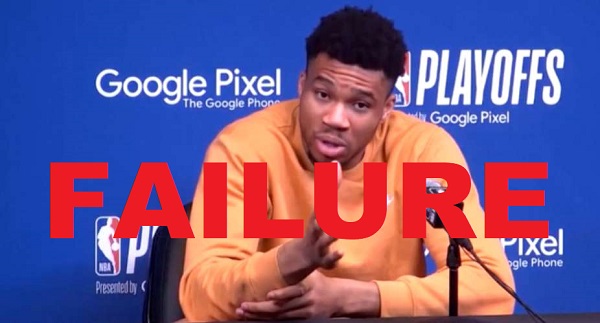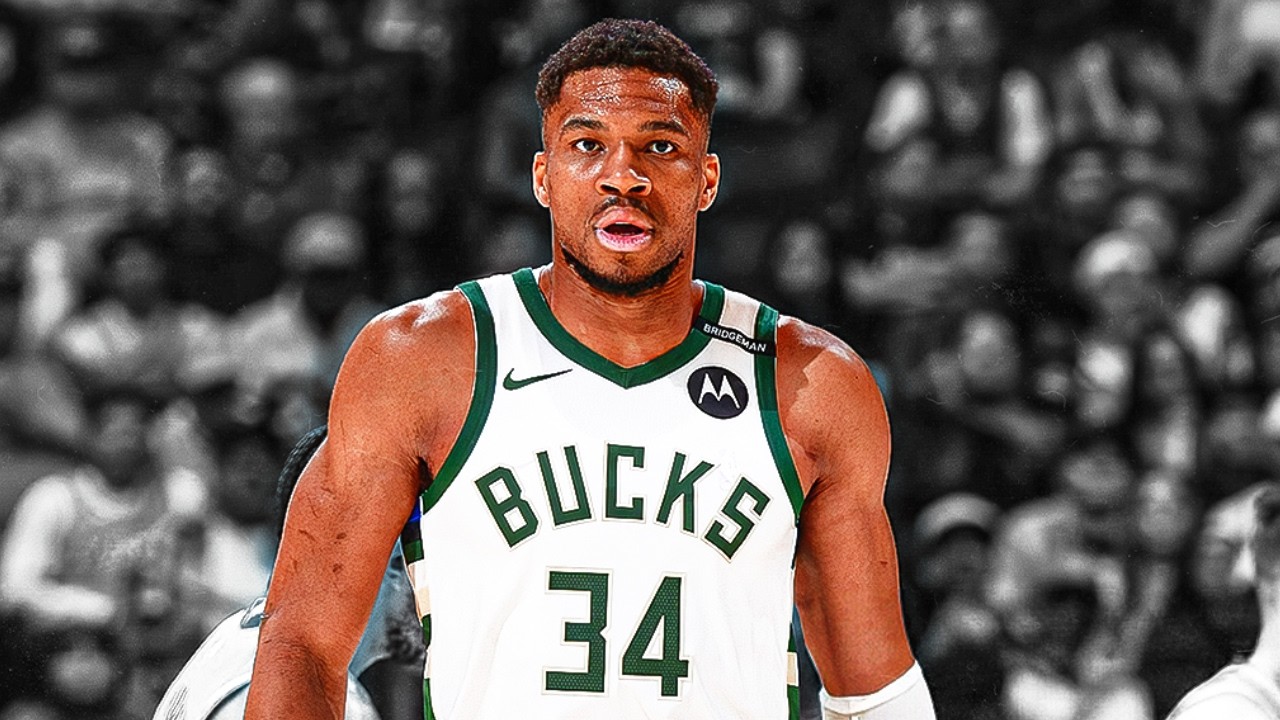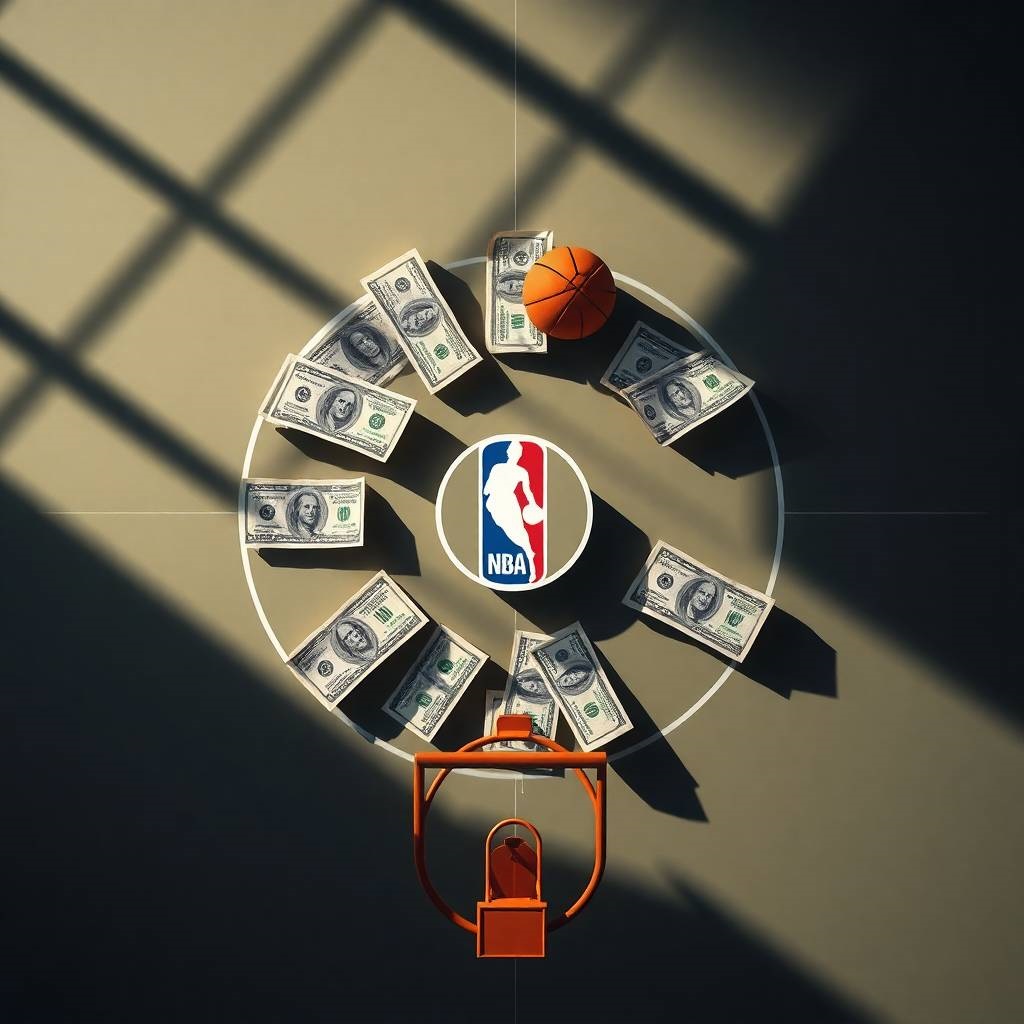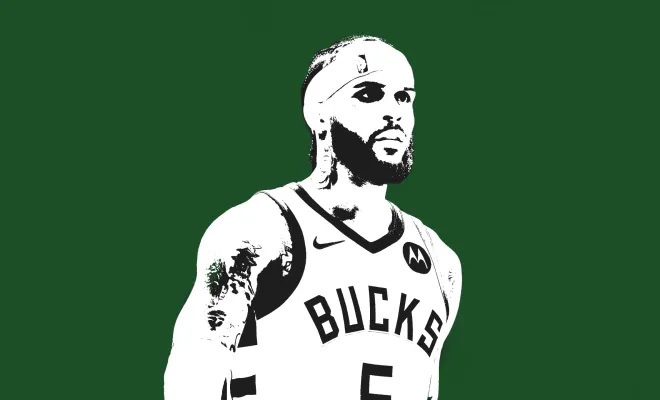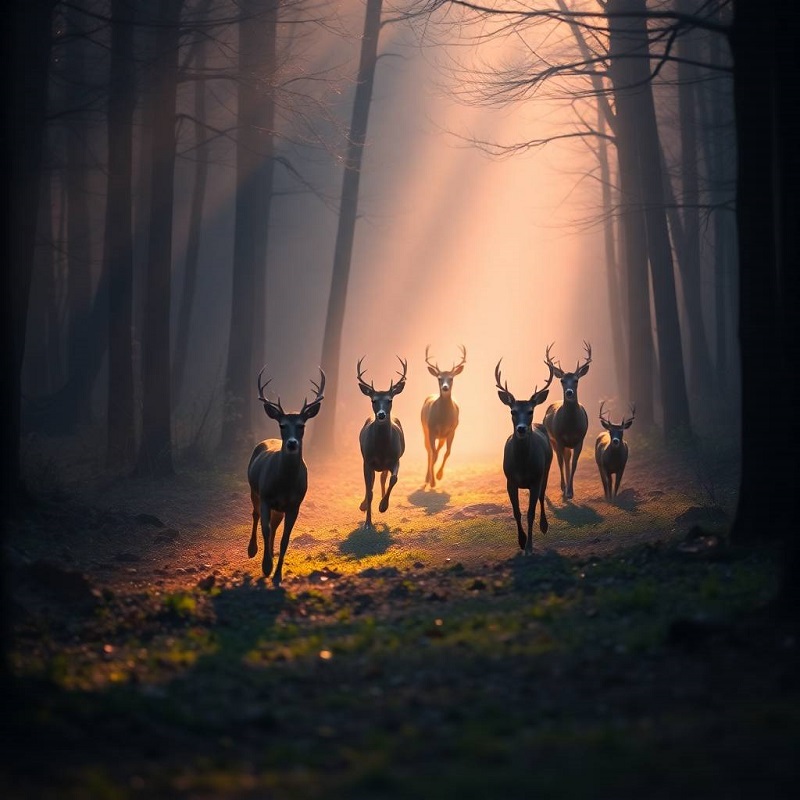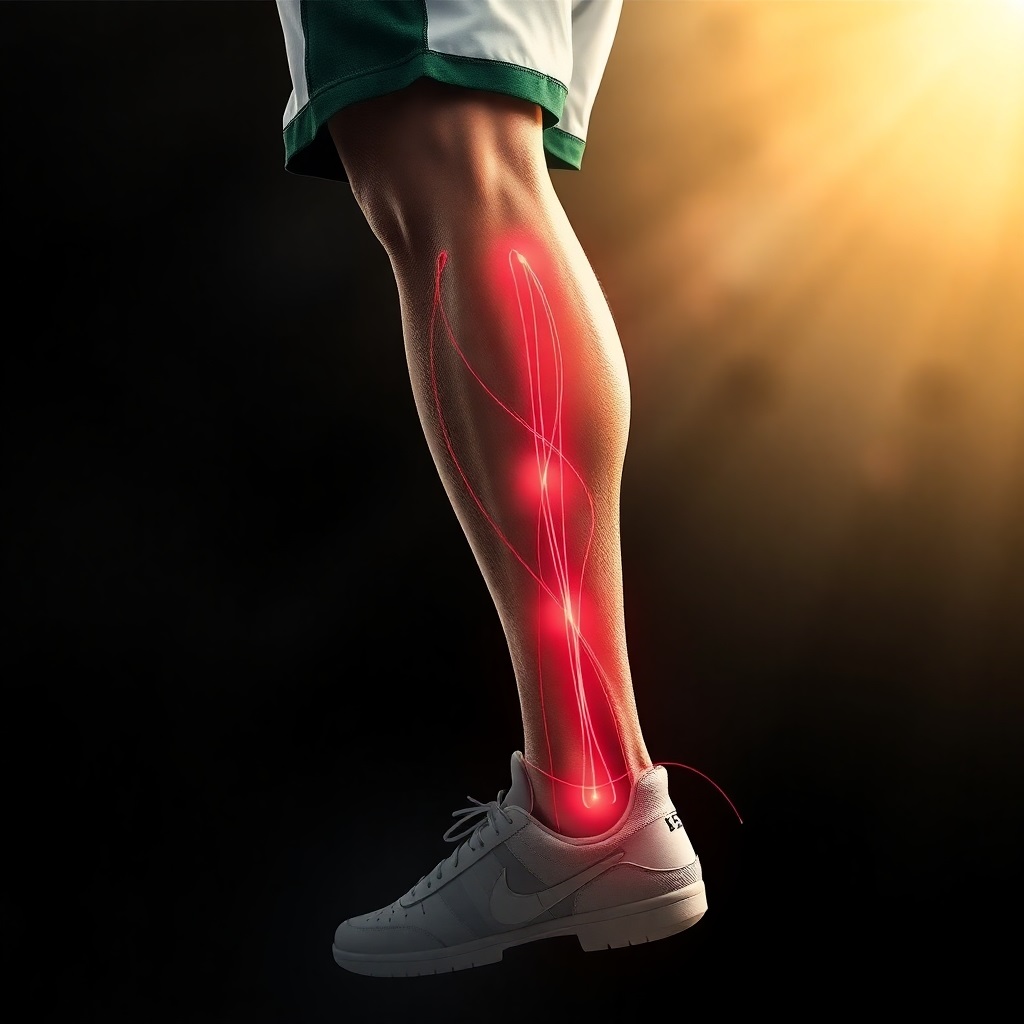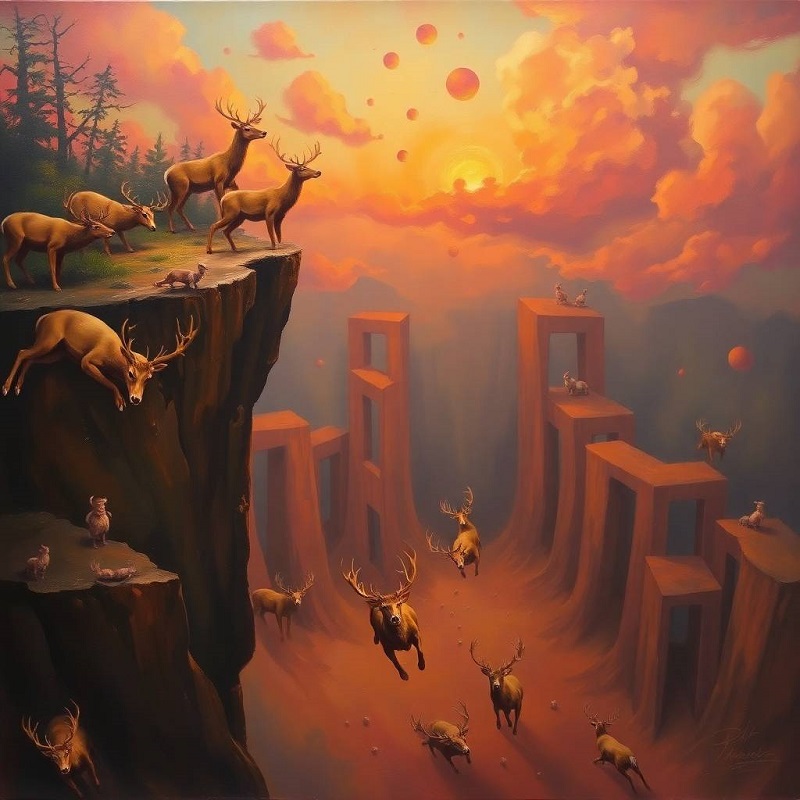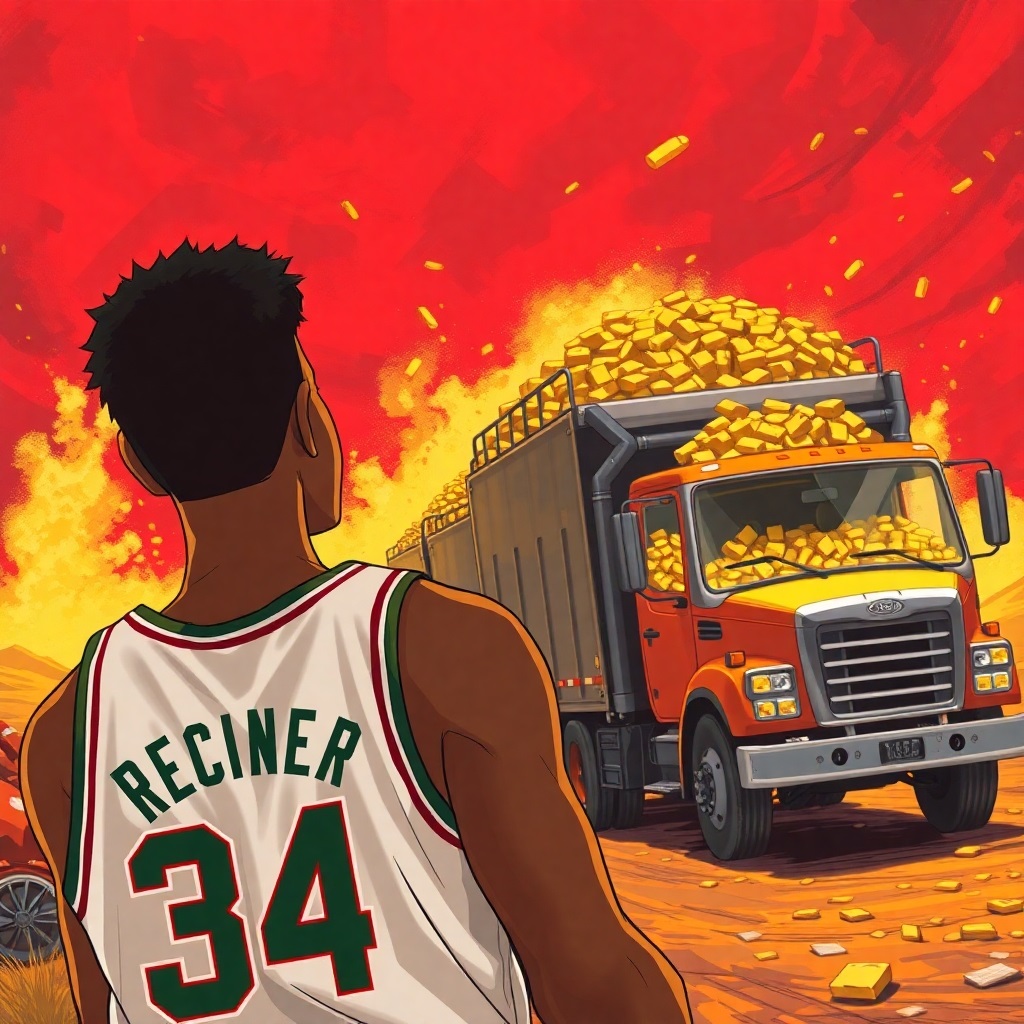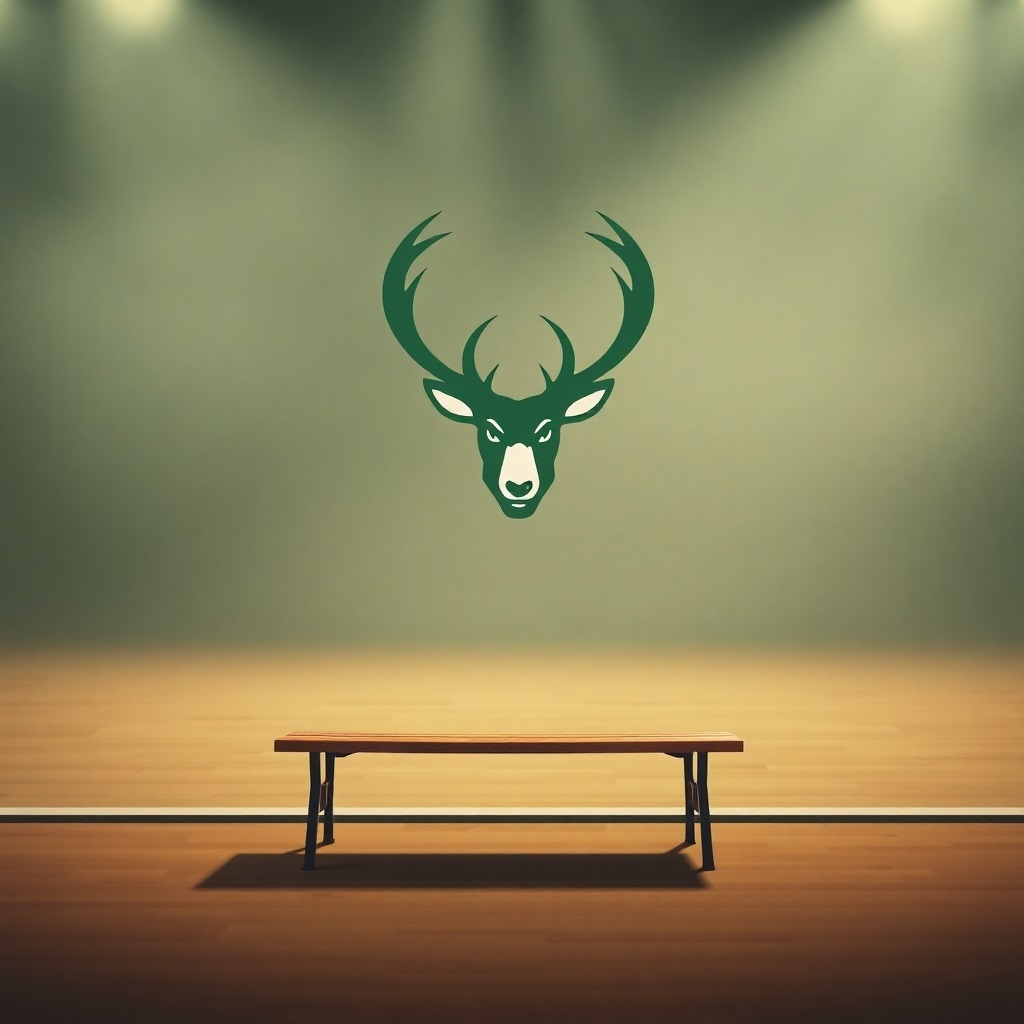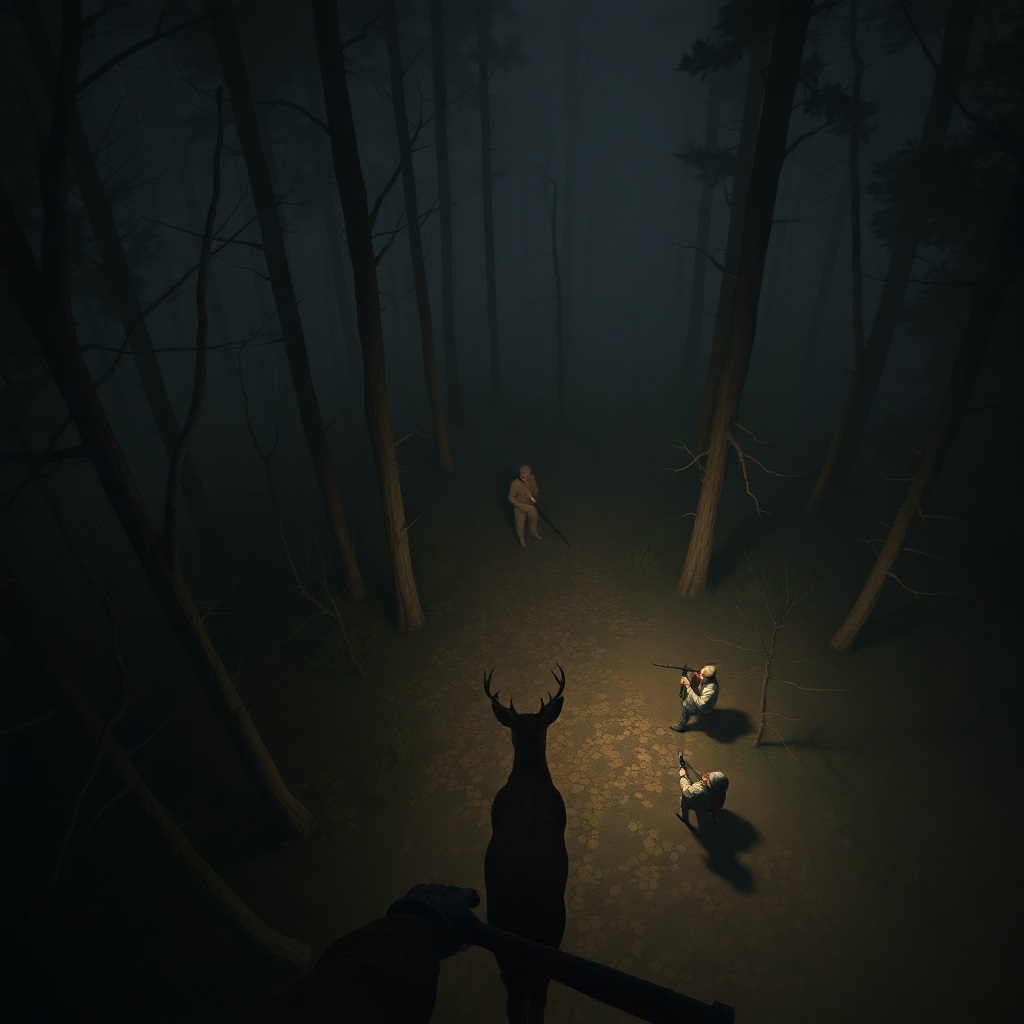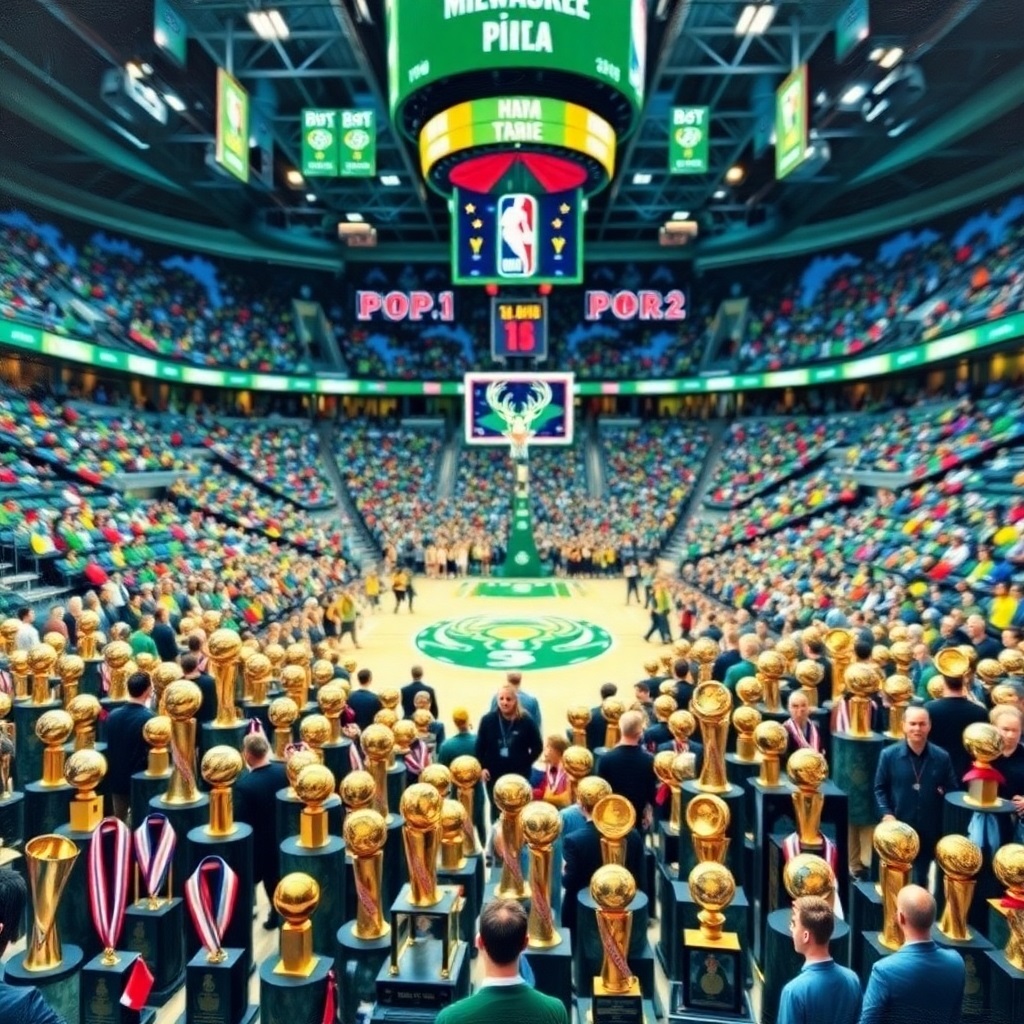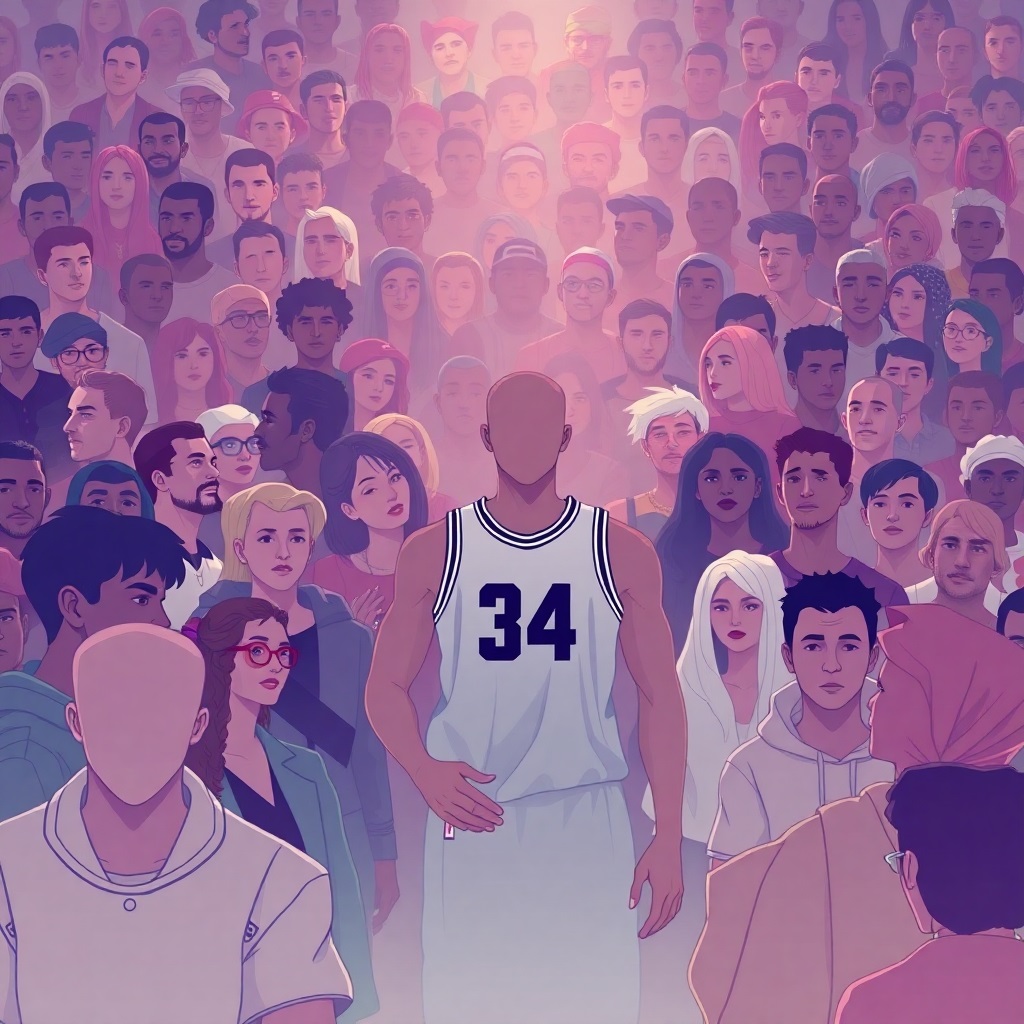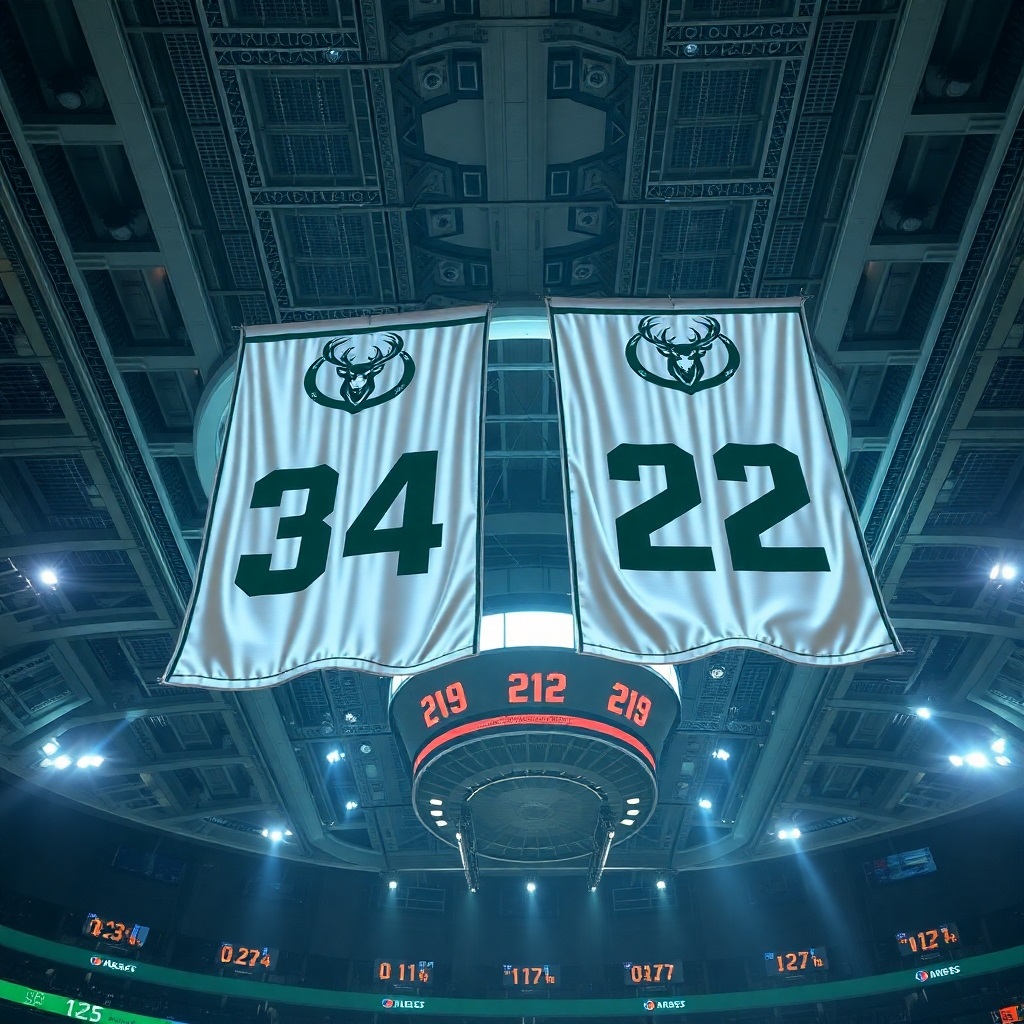Giannis Antetokounmpo, the Milwaukee Bucks’ superstar and two-time NBA MVP, has been the subject of trade rumours for many years, more so lately as the Bucks navigate inconsistent playoff performances. However, as the 2025 NBA off-season approaches, it’s highly unlikely that Giannis will be traded. This narrative is actually to Giannis’ liking. He is put up as the role model superhero and the rest of the roster constantly attacked. Either the roster or the coach. It’s never Giannis’ fault, is it? Well actually…
1. Giannis’ Reluctance to Leave His Comfort Zone
Giannis has spent his entire NBA career with the Milwaukee Bucks since being drafted in 2013. Milwaukee is more than just a team for him—it’s home. He’s built a life there, raising his family and becoming a beloved figure in the community. The idea of moving to a new city, adapting to a new franchise, and dealing with the pressures of a different fanbase could be daunting. Unlike some players who thrive on change, Giannis has shown a deep loyalty to Milwaukee, signing a supermax extension in 2020 despite the team’s postseason struggles at the time.
This loyalty stems partly from fear of the unknown. Playing for another team would mean stepping out of a system tailored to his strengths and into an environment where he might face greater scrutiny. The Bucks have provided him with stability, from coaching staff to teammates, which has allowed him to focus on his game without the distractions of a larger market. A trade to a team like the Los Angeles Lakers or Miami Heat would thrust him into a media frenzy, something Giannis has largely avoided in Milwaukee. You just need to see him in the All Star situations to understand that he is socially inept, in fact he never trains with other NBA stars in the off season. His hesitance to embrace such a shift makes a trade less likely, as he’d need to be fully on board for any deal to gain traction.
2. Questions About Giannis’ Skill Set and Basketball IQ
While Giannis is undeniably one of the NBA’s most dominant players, his game has limitations that raise questions about his ability to seamlessly fit into another team’s system. His skill set is heavily reliant on a specific style of play that the Bucks have perfected around him. And you won’t find many other teams willing to do something similar.
Limited Outside Shooting
Giannis’ lack of a consistent outside shot remains a glaring weakness. In the 2024-25 season, he’s shooting just 29.3% from three-point range on low volume, per NBA.com stats. The Bucks have built their offence to maximise his drives to the basket, surrounding him with shooters like Damian Lillard and Brook Lopez to space the floor. Other teams might not have the personnel or patience to accommodate a superstar who clogs the paint and struggles in catch-and-shoot situations. For example, a team like the Golden State Warriors, which thrives on motion and perimeter shooting, would struggle to integrate Giannis without overhauling its identity.
Basketball IQ and Playmaking
Giannis’ basketball IQ has also been a point of contention. While he’s an excellent decision-maker in transition and a willing passer (averaging 6.5 assists per game in 2024-25), his ability to read complex half-court defenses is inconsistent. The Bucks’ system simplifies his role: he’s often the primary ball-handler in pick-and-rolls or iso situations, with clear reads provided by coaching. On another team, he might be asked to play off the ball or make quicker decisions in a motion offense, areas where he’s shown limitations. His turnover rate (3.2 per game) suggests he can struggle under pressure, and a new system could exacerbate this. Giannis simply cannot understand, let alone execute, complex plays. He can’t screen and he doesn’t understand angles.
Comparison to Other Stars
Contrast Giannis with players like Kevin Durant or LeBron James, who have thrived in multiple systems due to their versatility. Durant’s shooting and off-ball movement make him plug-and-play, while LeBron’s elite IQ allows him to orchestrate any offense. Giannis, however, is more system-dependent, and teams considering a trade would need to rebuild their roster around him—a risky proposition given the assets they’d surrender.
3. The Bucks’ Unique Accommodations
The Bucks have gone to great lengths to cater to Giannis’ needs, creating an environment that maximizes his comfort and performance. These accommodations, which range from roster construction to off-court support, are unlikely to be replicated elsewhere.
Roster Built Around Giannis
The Bucks have prioritized players who complement Giannis’ game. Acquiring Damian Lillard in 2023 was a clear move to give Giannis a co-star who could handle playmaking duties and stretch the floor. Role players like Khris Middleton and Brook Lopez were perfect fits, providing shooting and defensive support. Other teams might not have the cap space or assets to build a similar supporting cast, especially after giving up draft picks and young talent to acquire Giannis in a trade.
Coaching and System
Coach Doc Rivers has tailored the Bucks’ system to Giannis’ strengths, emphasising transition opportunities and simple half-court sets. The coaching staff understands his limitations and designs game plans to hide them, such as avoiding late-game situations where his free-throw shooting (61.8% in 2024-25) could be exploited. A new team might demand more versatility, exposing his weaknesses in ways Milwaukee has carefully avoided. Giannis knows this and is extremely hesitant to be publicly exposed like that.
Off-Court Support
Off the court, the Bucks treat Giannis like royalty. From personalized training regimens to family support, the organization has ensured he feels valued and secure. Reports from ESPN indicate that Giannis has a close relationship with the front office, which consults him on major decisions. This level of influence is rare for a player, and it’s unlikely another team would grant him the same autonomy. For example, a franchise like the New York Knicks, known for its intense media pressure and hands-on ownership, might not offer the same level of personal attention.
4. The Bucks’ Commitment to Giannis
Beyond Giannis’ own hesitations and limitations, the Bucks have little incentive to trade him. He’s the face of the franchise, a global icon, and a key driver of revenue through ticket sales and merchandise. Trading him would signal a rebuild, something the Bucks, fresh off a 2021 championship, are unlikely to embrace. The front office has shown a willingness to tweak the roster—such as trading Jrue Holiday for Lillard—to keep Giannis happy and competitive.
Moreover, Giannis’ contract, a five-year, $228 million deal running through 2028, gives the Bucks leverage. He has a player option in 2027, meaning there’s no immediate pressure to trade him. Any team acquiring Giannis would need to offer a massive package, likely including multiple All-Stars and draft picks, which few franchises can afford without gutting their roster. The Bucks would rather continue building around him than start over.
5. Who even wants him anymore?
Some argue that Giannis could thrive elsewhere, pointing to his work ethic. However, incremental improvements may not be enough to justify a trade to a team expecting instant chemistry. More importantly no other super star would want to play with him unless they are really desperate like Lillard was. His public comments emphasise loyalty. In a February 2025 press conference, he said, “Milwaukee is my home. I want to win here.” This sentiment, combined with the Bucks’ efforts to contend, makes a trade improbable. We have written about this before here and his trade value keeps falling.
Giannis ain’t going nowhere (again)
Giannis Antetokounmpo is unlikely to be traded this off-season due to a combination of personal, professional, and organizational factors. His apprehension about leaving Milwaukee, coupled with questions about his adaptability to new systems, makes him a risky fit for other teams. The Bucks’ tailored accommodations—both on and off the court—further cement his place in Milwaukee. While trade rumours will persist, Giannis and the Bucks are too deeply intertwined for a split in 2025. For now, the Greek Freak remains the heart of Milwaukee, and that’s unlikely to change. The Bucks’ marketing will keep hyping him up, coaches will come and go, roster changes all the time, he will keep stat padding and breaking records. But forget any aspirations for the playoffs.
(Here an older post on this topic in relation to common Google search queries about Giannis being traded. And here are all the details about his contract limitations.)












